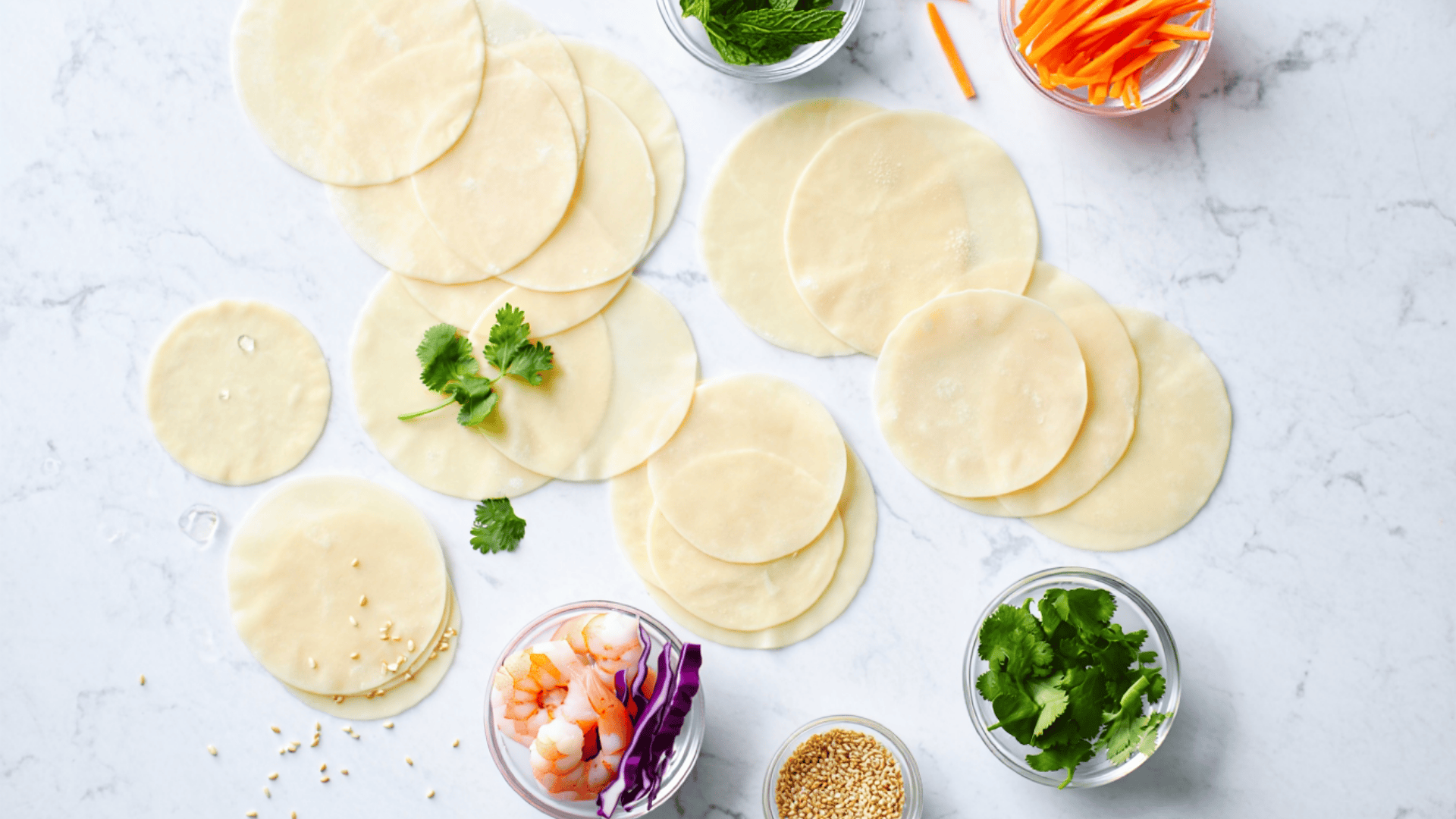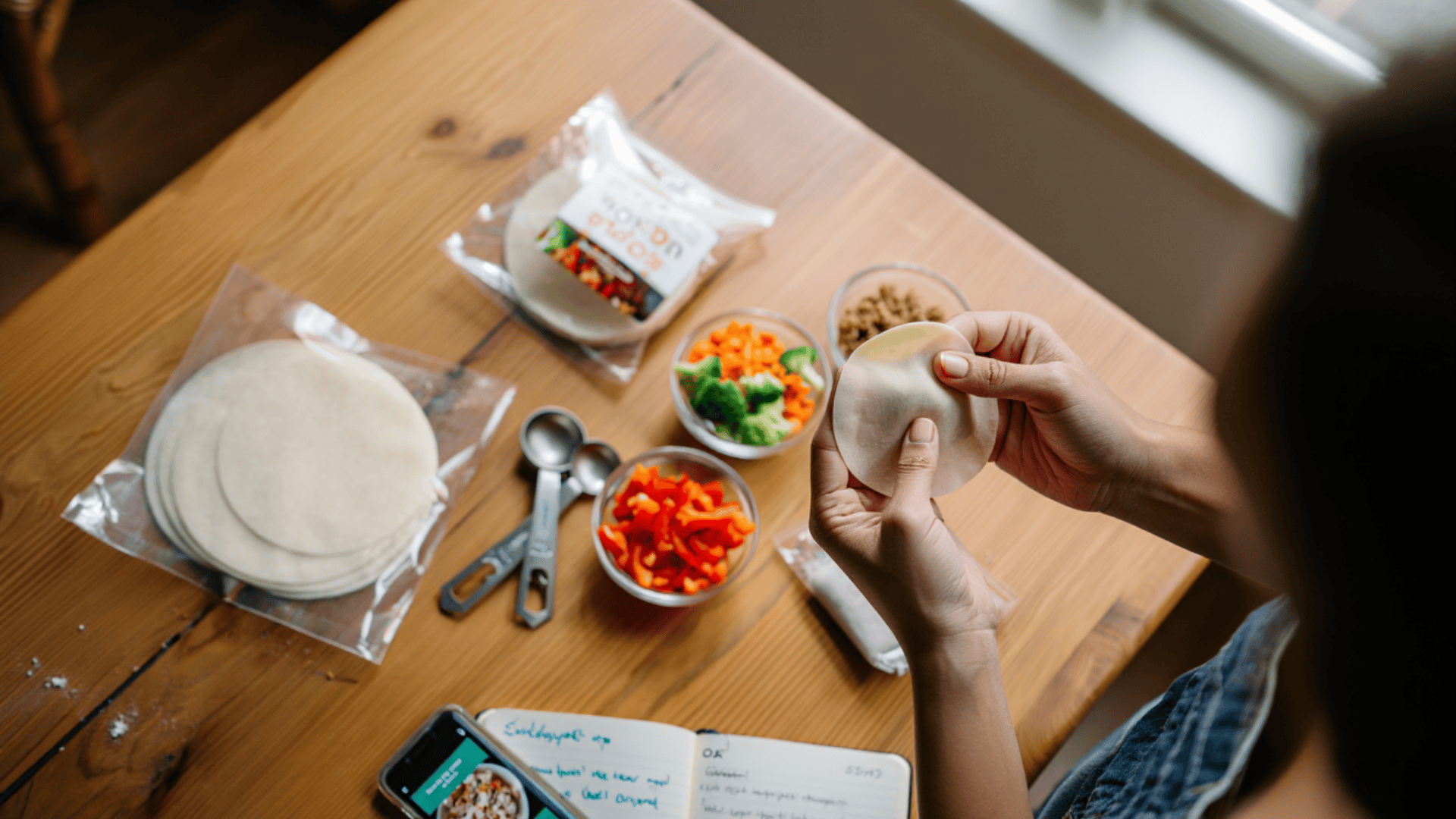I used to think wonton wrappers were just thin pieces of dough; turns out there’s way more to their nutritional story than meets the eye. As someone who loves making dumplings but also cares about what goes into my body, I wanted to get the real facts about these kitchen staples.
You know that moment when you’re meal prepping and suddenly realize you have no idea how many carbs are actually in each wrapper?
Or when you’re trying to figure out which brand gives you the best nutritional bang for your buck? I’ve been there, and honestly, the information out there is pretty scattered.
That’s why I decided to compile everything you need to know about wonton wrapper nutrition in one place. We’ll break down the per-sheet numbers, compare brands, and look at how different cooking methods affect the nutritional profile.
Standard Nutrition Snapshot: Typical Values
Here’s what you can expect nutritionally when you grab a package of wonton wrappers:
Per single dry sheet: Most medium to large sheets contain 20-50 calories and 4-11g carbohydrates, though this varies significantly by size and brand.
Per 100g (dry): Around 330-350 calories with 70-80g carbohydrates; these are the lab-tested numbers you’ll find in nutrition databases like ReciPal.
| Sheet Size | Calories | Carbs (g) | Source |
|---|---|---|---|
| Small | 15-25 | 3-5 | Nutritionix |
| Medium | 25-35 | 5-8 | EatThisMuch |
| Large | 35-50 | 8-11 | Manufacturer labels |
Why the variation? Sheet diameter, thickness, brand recipes, and added ingredients like tapioca starch or extra salt all impact the final nutritional profile.
Macronutrient Breakdown & Micronutrients of Rice Paper

Wonton wrappers are essentially a carb-forward ingredient with minimal fat and modest protein content.
While they won’t be your main source of vitamins and minerals, understanding their complete nutritional profile helps you plan balanced meals around them.
1. The Macronutrient Story
The macronutrient profile of wonton wrappers follows a predictable pattern for wheat-based products:
- Carbohydrates: 70-80% of total calories (70-80g per 100g serving)
- Protein: 8-12% of calories (8-12g per 100g serving)
- Fat: Minimal content, under 2g per 100g serving
- Caloric distribution: Similar to other wheat-based wraps and pasta products
This makes them a pure energy source rather than a balanced nutritional component.
2. Fiber and Sodium Content
Two key components that vary significantly across brands and manufacturing processes:
- Fiber: Low at 1-3g per 100g (varies by brand – ReciPal, FatSecret)
- Sodium: Highly variable between manufacturers, 200-800mg per 100g
- Sodium variation factors: Recipe formulations and preservation methods during production
Always check labels since sodium content can impact your daily intake goals.
3. Micronutrient Reality Check
Wonton wrappers contain only basic micronutrients typical of enriched wheat products:
- Iron: Trace amounts from enriched wheat flour
- Folate: Small quantities are typical of fortified grain products
- B vitamins: Minimal levels (thiamine, niacin, riboflavin)
- Other minerals: Negligible amounts of calcium, magnesium, phosphorus
- Overall micronutrient density: Low compared to whole food ingredients
The wrapper serves as a vehicle rather than a significant source of vitamins and minerals.
How Preparation Changes Nutrition?
The way you prepare your wonton wrappers can dramatically shift their nutritional impact. When you’re making fresh spring rolls or steamed dumplings, the math stays simple: just add your wrapper calories to whatever delicious fillings you’ve packed inside.
According to USDA data and research from the Institute of Child Nutrition, a typical fresh spring roll clocks in around 80-120 calories total, with the wrapper itself contributing roughly 20-35 calories depending on size.
But here’s where things get interesting: the moment you decide to fry those wrappers, you’re looking at a completely different nutritional story. That crispy, golden exterior comes at a cost as the wrapper acts like a little sponge, absorbing oil during the cooking process.
Each fried roll picks up an extra 40-80 calories, depending on how much oil it soaks up. Want to track this accurately? Weigh your rolls before and after frying, or simply add 1-2 teaspoons of oil per roll to your calculations.
On the flip side, if you’re just soaking or wetting your wrappers to make them pliable, you’re adding essentially nothing but water weight; no meaningful nutritional impact whatsoever.
Serving & Portion Guidance
Understanding portion sizes helps you track nutrition accurately and make informed choices about your roll combinations.
- Standard Serving: One sheet per roll is typical; multiply wrapper nutrition by the number of rolls consumed.
- Low-Carb Modifications: Load up on vegetables and lean proteins while reducing noodles, though wrappers themselves remain carb-dense.
- Keto Consideration: Wonton wrappers aren’t keto-friendly due to a wheat base; consider lettuce wraps or shirataki alternatives instead.
For instance, a light veggie shrimp roll typically contains around 120-150 calories in total when you combine the wrapper, shrimp, fresh vegetables, and a light dipping sauce. On the higher end, a noodle and sauce roll can reach 200-280 calories once you add rice noodles, protein, and a heavier sauce to your wrapper base.
These estimates give you a baseline for meal planning while leaving room to customize based on your specific ingredients and dietary goals.
Brand Comparisons (Mini Buyer’s Guide)
Different brands can vary significantly in their nutritional profiles, so comparing labels helps you make the best choice for your dietary needs.
Here’s how popular brands stack up nutritionally per sheet.
| Brand | Calories/sheet | Carbs (g) | Sodium (mg) | Sheet Weight |
|---|---|---|---|---|
| Twin Dragon | 23 | 4.8 | 45 | 6g |
| Wei Chuan | 28 | 5.2 | 62 | 7g |
| Nasoya | 20 | 4.1 | 38 | 5.5g |
| Dynasty | 32 | 6.8 | 78 | 8g |
| Generic/Store Brand | 25 | 5.0 | 55 | 6.5g |
*Data sourced from Nutritionix, EatThisMuch, and manufacturer labels.
Shopping Tips: Always check the grams per sheet listed on the package since this directly affects nutritional values. If you’re watching sodium intake, compare brands carefully as levels can vary dramatically between manufacturers.
Rice Paper: Recipes & Ideas

These simple recipes showcase the wonton wrappers’ versatility while keeping nutrition in check. Both options offer lighter alternatives to traditional fried preparations.
Fresh Vietnamese-Style Spring Rolls (Nutrient-Light)
Perfect for a light lunch or appetizer, these fresh rolls pack maximum flavor with minimal calories. The key is working quickly once the wrapper is softened.
- Step 1: Soak the wonton wrapper in warm water for 30 seconds until pliable.
- Step 2: Layer fresh herbs, julienned vegetables, and cooked shrimp on the lower third of the wrapper.
- Step 3: Fold the bottom edge over the filling, fold in the sides, then roll tightly forward.
- Step 4: Serve immediately with low-sodium dipping sauce or peanut sauce.
Each roll contains approximately 80-100 calories and delivers fresh vegetables with lean protein in every bite.
Rice Paper “Crackers” (Baked or Air-Fried)
Convert leftover wrappers into crispy snacks without the guilt of deep frying. This method creates a satisfying crunch with minimal added oil.
- Step 1: Lightly brush dry wonton wrappers with oil or cooking spray.
- Step 2: Sprinkle with garlic powder, sesame seeds, or sea salt for flavor.
- Step 3: Bake at 375°F for 5-7 minutes or air fry at 350°F for 3-4 minutes until golden.
- Step 4: Cool completely before serving as chips with hummus or salsa.
These homemade crackers contain roughly 25-35 calories each and make excellent vehicles for healthy dips and spreads.
Wrapping It Up
Honestly, I never thought I’d become someone who gets excited about wonton wrapper nutrition, but here we are!
Once you understand what’s actually in these little pockets of possibility, meal planning becomes so much easier. You can make informed swaps, track your macros accurately, and even turn them into guilt-free snacks.
What I love most is that you don’t have to give up your favorite dumplings and spring rolls to eat healthily; you just need to know how to work with what you’ve got.
I’d love to hear how you use wonton wrappers in your kitchen: are you a traditionalist or do you get creative with them? Share your favorite tricks in the comments!





